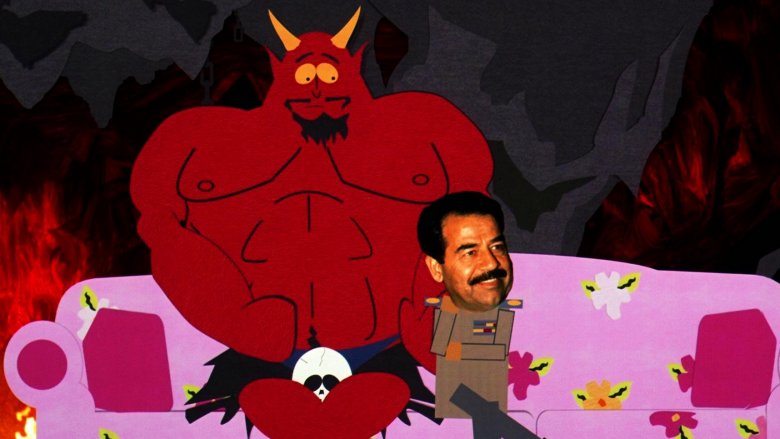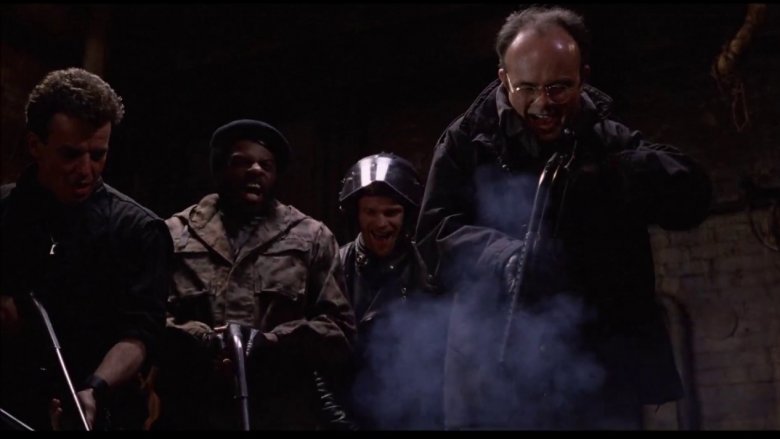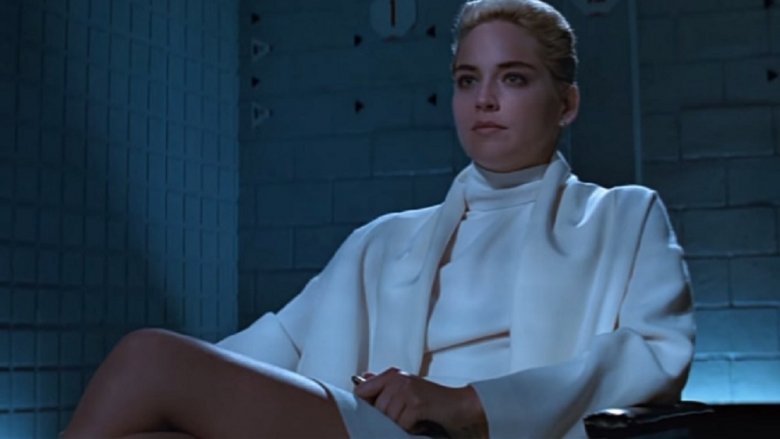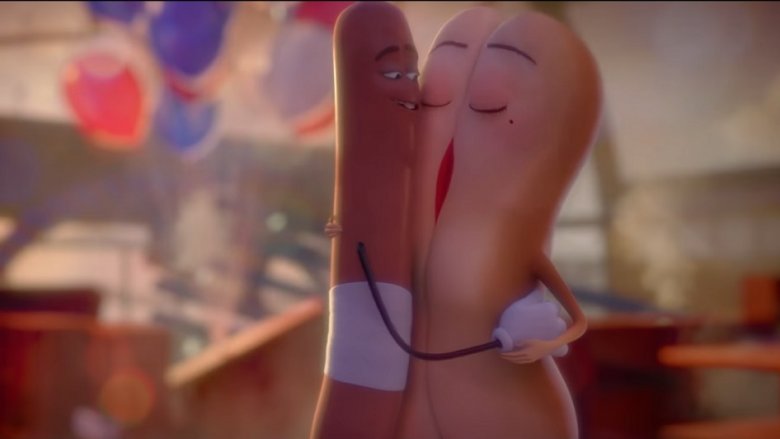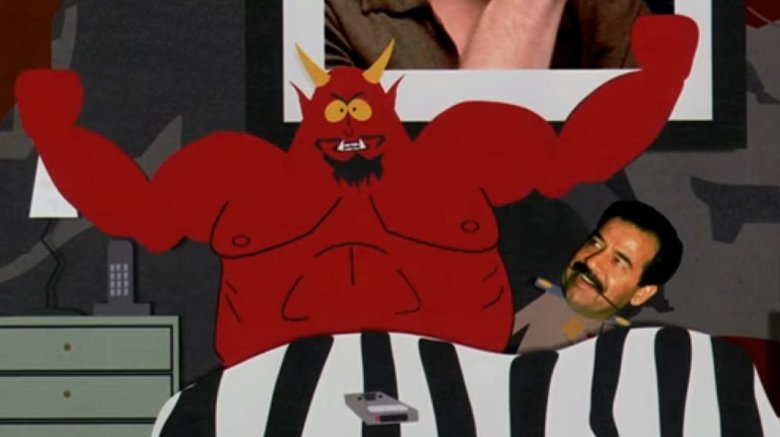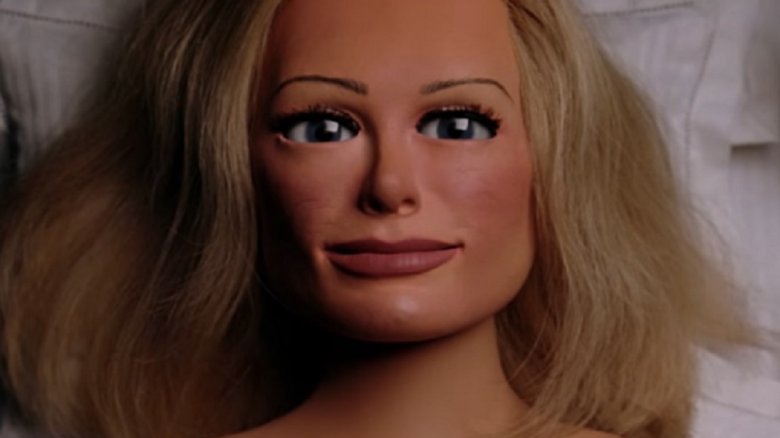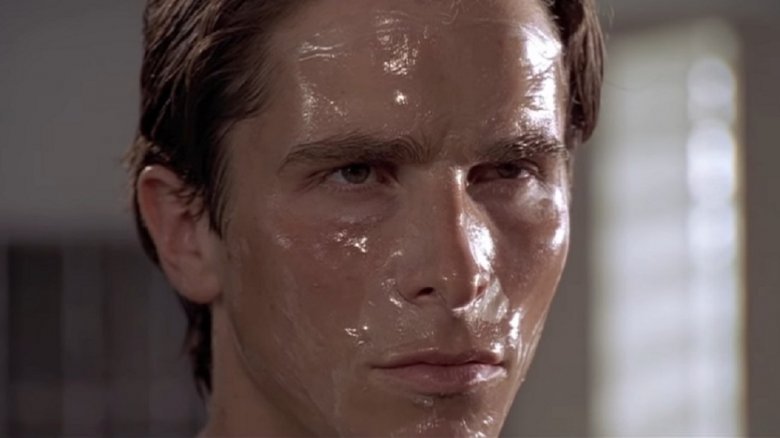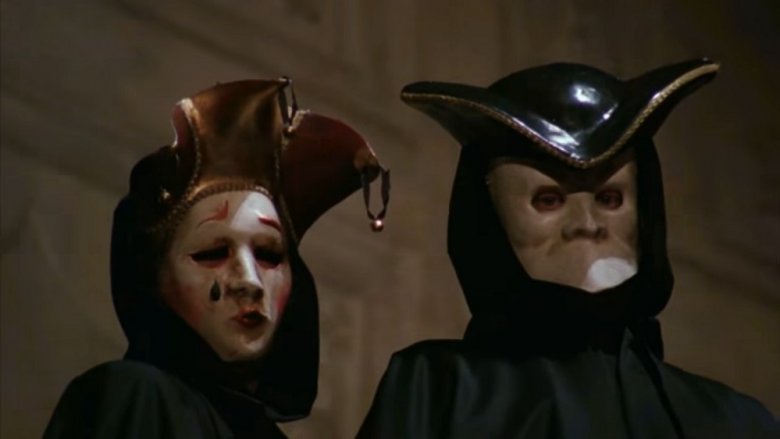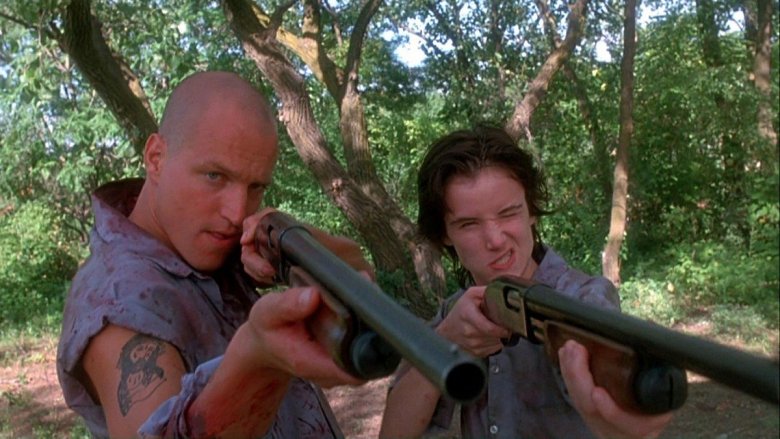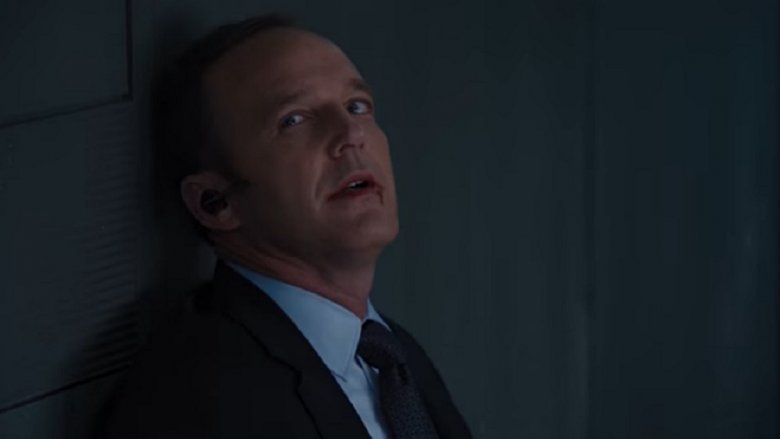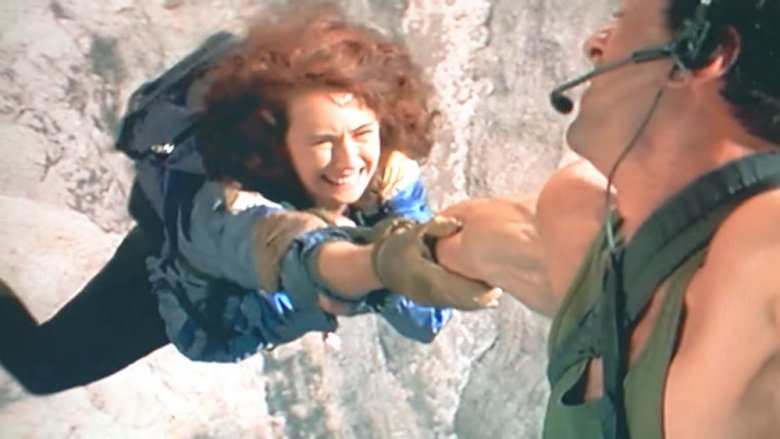Movies That Needed To Be Toned Down Before Their Release
Rating movies is far from an exact science, and filmmakers—being creative and sometimes slightly unhinged types—tend to err on the side of seeing what they can get away with. For these reasons, any film with adult themes of any kind is liable to undergo a round of cuts or two (or three, or ten) before release. These are cases when films pushed the boundaries, and the MPAA—the semi-mysterious organization in charge of handing down ratings—pushed back.
Robocop
American audiences were largely unfamiliar with Dutch filmmaker Paul Verhoeven in 1987, and so were wholly unprepared for Robocop—a razor-sharp political satire, religious allegory, and technological cautionary tale wrapped in the guise of a cheesy sci-fi/action B-movie. Also unexpected was the absolutely insane level of violence, which asserts itself early in the infamous scene where a malfunctioning early prototype, the ED-209, rains down heavy gunfire on a hapless office lackey during a demonstration. Also controversial was a later scene wherein a gang of thugs (led by Clarence Boddicker, in the role that practically handed Kurtwood Smith his career) take their time literally blowing protagonist Alex Murphy (Peter Weller) to bits—and both scenes were originally far more graphic.
The earlier scene was trimmed of several seconds of bloody footage deemed "excessive" by the MPAA; the later scene likewise featured more extended, graphic shots (such as Murphy's arm coming off) and a more explicit headshot when Murphy is finally put out of his misery. Unfortunately, as Verhoeven explained in the DVD commentary, the cuts had the effect of throwing off the comic timing of the scenes. That's right: the extreme over-the-top nature of the violence was meant to play as parody (making the ED-209 scene's punchline "Somebody wanna call a paramedic?" land even harder). Robocop was able to avoid an X rating (the NC-17 did not yet exist), but its most extreme scenes—though slightly less bloody—are arguably more brutal than originally intended.
Basic Instinct
Speaking of Verhoeven, it should come as no surprise that his 1992 feature Basic Instinct had to be whittled down to achieve an R rating—the surprising part is what was left in. The scene where Sharon Stone's character flummoxes a room full of detectives by subtly but explicitly revealing that she's not wearing underwear (a shot which Verhoeven and Director of Photography Jan De Bont captured on an empty set after sending everyone else home for the day) was somehow allowed to remain in the R-rated cut of the film even after Verhoeven made all of the cuts demanded by the MPAA, which amounted to about 40 seconds of extended and/or graphic scenes of nudity.
Speaking with Rolling Stone, Verhoeven explained, "I had endless fights for months with the MPAA about what I could and couldn't show in the film... we had to go back to the MPAA eight times with that movie before we could get an R rating, which is what my contract required." He described the process as "very unpleasant," adding that even he thought it strange that "the shot of Sharon Stone spreading her legs was never a problem." The experience ended up being so taxing that Verhoeven decided before shooting even began that his next feature—the notorious Showgirls—would be made with an NC-17 rating in mind.
Sausage Party
The R-rated animated feature Sausage Party, which explored the secret lives of foodstuffs in all of the most hilariously inappropriate ways possible, had no shortage of raunchy sight gags. Around the time of its release, the film's voice actor, producer and co-writer Seth Rogen went on The Howard Stern Show to discuss its bonkers aesthetic and nimble sidestepping of an NC-17 rating due to the infamous closing "food orgy" scene. "We probably added six things into the orgy that we were like, 'OK, these are like our sacrificial lambs,'" Rogen explained. But the MPAA only demanded one cut—a weirdly specific one.
If you look closely during the scene, you may notice that the pita bread is... well, male, and partially anatomically correct. In order to secure an R rating, the MPAA suggested that some light manscaping take place, and insisted that the bread's anatomy be "digitally shaved." "I wish I could have been there, honestly," said Rogen. "I imagine a very heated debate did occur." That the MPAA could watch the entirety of Sausage Party and single this one thing out as just too much seems to defy explanation, but they're the professionals.
South Park: Bigger, Longer and Uncut
South Park has pushed the limits of good taste since its very first episode, and nobody expected anything different from South Park: Bigger, Longer and Uncut, which was released during the show's third season in 1999. Series creators Trey Parker and Matt Stone may not have necessarily expected the MPAA (at whom the film takes more than one cheap shot) to be totally psyched about a staunch and somewhat self-serving anti-censorship message wrapped in a thick cloak of horrifying vulgarity, but even they were surprised when the ratings board slapped their film with an NC-17 rating no fewer than six times, despite their requested cuts being made before each submission.
The details of the team's protracted fight with the MPAA can be summed up nicely by an incredibly NSFW memo sent by Matt Stone to the studio, detailing all of the (incredibly nasty) issues that were addressed since the previous submission and ending with the post-script, "This is my favorite memo ever." Fans will notice that the final point addressed refers to a gag that ended up being cut from the film, as Stone points out that they left in "the scenes with Cartman's mom and the horse," describing said scenes as a "joke we really want to fight for." They may not have gotten their way, but they did get the last laugh; as the MPAA objected to the word "hell" in the original title South Park: All Hell Breaks Loose, the duo changed it to a blatant penis joke, which apparently went over just fine.
Team America: World Police
Parker and Stone would tangle with the MPAA once again with 2004's Team America: World Police over the film's famous sex scene (which, like the rest of the movie, was performed by puppets). The version of the scene that made it into theaters is hilariously over-the-top in its depiction of marionette sex, but the version (NSFW) that almost earned the film an NC-17 (and which can be seen in the unrated cut) sails far beyond "over the top" and straight into the realm of "insanely perverted."
According to producer Scott Rudin, nine different versions of the scene in question—each less explicit than the previous one—were submitted before the MPAA finally agreed to to give the film an R rating. Clashes with the MPAA weren't the only issues in bringing Team America to the screen; Stone famously called the film's production "the worst time of my entire life," adding that he never wanted to see a puppet again and vowing never to make another movie with Parker (which, to this day, he has not). But for the duo's fans, the hardships were worth it, as they resulted in a classic film with the greatest explanation for its rating of any movie ever: "Rated R for graphic crude and sexual humor, violent images, and strong language—all involving puppets."
American Psycho
The Bret Easton Ellis novel American Psycho was long thought to be unadaptable, due to its extremely unreliable narrator—not to mention some of the most vivid, graphic and brutal scenes of violence ever put to page. Mary Harron's 2000 adaptation didn't shy away from the bloodshed (although it did tone down some of the novel's more gut-wrenching scenes), but it wasn't the film's violence that drew the ire of the MPAA—it was the brief, fairly tame sex scene between Patrick Bateman (Christian Bale) and two prostitutes.
The MPAA initially slapped Psycho with an NC-17 rating, prompting a defense of the scene from Harron: "That Bateman... is looking at himself in the mirror and not at his partners seems to be an issue for the MPAA, but his expression sums up his frighteningly detached relationship to the world around him. To me it's one of the most significant scenes in the film and to cut it would cause serious damage." But the rating held up on appeal from U.S. distributor Lionsgate, and several seconds had to be shaved off the scene in order to earn the film its R rating.
Eyes Wide Shut
Eyes Wide Shut was the great Stanley Kubrick's final completed film, and prior to its release, many observers saw it as a chance to finally bring some legitimacy to the NC-17 rating. Originally envisioned as a rating for respectable films with adult themes, the NC-17 had become a box office kiss of death, and it was thought that it would take a filmmaker of Kubrick's stature to buck that trend. Unfortunately, by the time the film went in front of the ratings board and was slapped with the adults-only rating, Kubrick had died—and studio Warner Bros. was disinclined to let the rating stand.
In a move that Kubrick almost certainly would not have appreciated, the studio chose to digitally alter the scene in question—a lingering tracking shot of an orgy in progress, into which cloaked figures were inserted in order to block the more explicit action. Beloved film critic Roger Ebert took the MPAA to task in his positive review of the film, saying that "Eyes Wide Shut is an adult film in every atom of its being," and calling the decision to alter it "symbolic of the moral hypocrisy of the rating system that it would force a great director to compromise his vision."
Natural Born Killers
Natural Born Killers is director Oliver Stone's commentary on violence and the media, and Stone isn't known for being reserved. He's said the MPAA found his original cut of the film to be "upsettingly chaotic," and a slew of cuts both major and minor were insisted upon before the film could receive an R rating.
While many of the changes simply consisted of shortening or desaturating scenes of violence, others made use of alternate takes—such as the scene where Tom Sizemore's psychotic cop Jack Scagnetti kills a prostitute, who keeps her underwear on in the R-rated version—and some scenes were deleted altogether. The prison riot scene, in particular, had to undergo major surgery before meeting with approval from the ratings board. Alternate footage was employed for depicting the shootings of several prison guards and a gruesome injury to reporter Wayne Gale (Robert Downey Jr.), and the fate of Warden McCluskey (Tommy Lee Jones)—which is only hinted at in the theatrical cut—is made brutally clear in one excised shot, in which rioting convicts gleefully parade his head about on a stake. In all, the MPAA demanded a total of 155 cuts comprising over four minutes of screen time.
Marvel's The Avengers
It's recently been found that modern PG-13 films contain about the same level of violence as R-rated ones, especially when it comes to depictions of gun violence. But apparently, some specific types of injuries simply will not fly, as Marvel Studios found out when submitting the first and second cuts of their blockbuster team-up Marvel's The Avengers to the ratings board. According to Marvel head honcho Kevin Feige, the first two cuts came back with an R rating due to Agent Phil Coulson's "death" scene at the hands of Loki.
Speaking with Movies.com, Feige explained that "whenever you impale somebody from their back and the blade comes out their chest, there are issues." The injury was explicitly shown in the first cut, and toned down to be less gruesome in the second; by the third, the injury was not so much shown as implied. This was enough for the MPAA to relent, clearing the way for a PG-13-rated Avengers to become the first Marvel movie to gross over a billion dollars at the worldwide box office.
Cliffhanger
Director Renny Harlin followed up the first two Die Hard films with an underrated gem that has been called "Die Hard on a mountain"—Cliffhanger, one of the last great Sylvester Stallone action vehicles, which sports killer (sometimes literally) aerial sequences and amazing supporting performances by Michael Rooker and John Lithgow. Harlin's original cut ran well over two hours, and didn't hold back with its brutal violence underlined by a dark, menacing temporary score which borrowed liberally from the scores for Predator and Die Hard. The MPAA did not approve, forcing Harlin to recut the film—using alternate footage for some of the offending scenes—and also to rework the score.
The result was lighter on the graphic headshots and and explosively bloody gunplay to which the MPAA had objected, but it was also arguably quite a different film. Despite containing some scenes not present in the original cut, the film's runtime had been reduced from 130 minutes to 112, and the final score ended up being much more upbeat than the brooding temporary music. This made the film more briskly paced, with the emphasis on action rather than suspense and bloody violence—but while it was enough for the MPAA, the theatrical cut was whittled down yet further by British censors, who demanded an extra 70 seconds of footage which they considered "violence for violence's sake" be cut from the film before they would agree to release it with a 15 certificate in the U.K.
